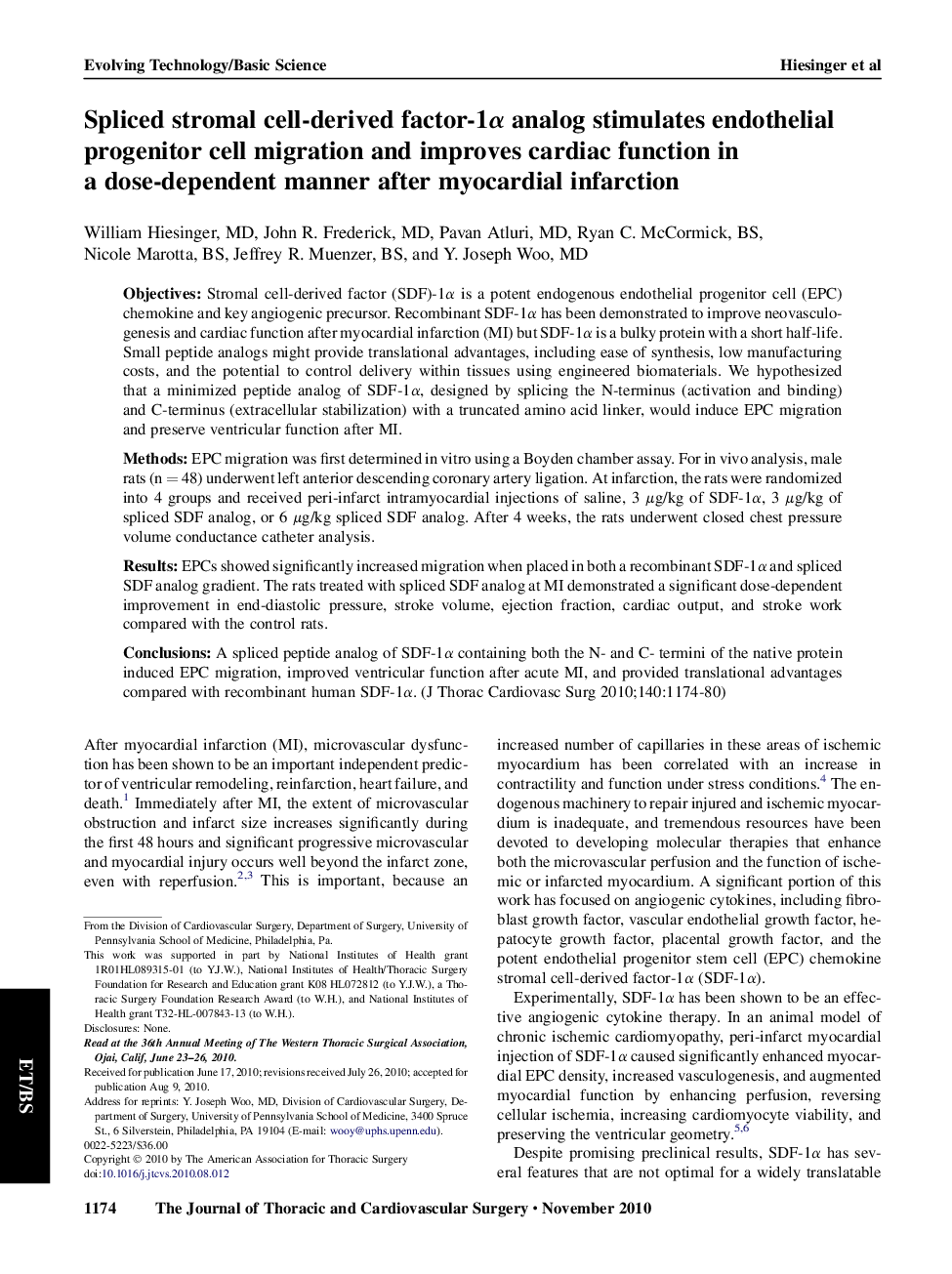| Article ID | Journal | Published Year | Pages | File Type |
|---|---|---|---|---|
| 2983698 | The Journal of Thoracic and Cardiovascular Surgery | 2010 | 7 Pages |
ObjectivesStromal cell-derived factor (SDF)-1α is a potent endogenous endothelial progenitor cell (EPC) chemokine and key angiogenic precursor. Recombinant SDF-1α has been demonstrated to improve neovasculogenesis and cardiac function after myocardial infarction (MI) but SDF-1α is a bulky protein with a short half-life. Small peptide analogs might provide translational advantages, including ease of synthesis, low manufacturing costs, and the potential to control delivery within tissues using engineered biomaterials. We hypothesized that a minimized peptide analog of SDF-1α, designed by splicing the N-terminus (activation and binding) and C-terminus (extracellular stabilization) with a truncated amino acid linker, would induce EPC migration and preserve ventricular function after MI.MethodsEPC migration was first determined in vitro using a Boyden chamber assay. For in vivo analysis, male rats (n = 48) underwent left anterior descending coronary artery ligation. At infarction, the rats were randomized into 4 groups and received peri-infarct intramyocardial injections of saline, 3 μg/kg of SDF-1α, 3 μg/kg of spliced SDF analog, or 6 μg/kg spliced SDF analog. After 4 weeks, the rats underwent closed chest pressure volume conductance catheter analysis.ResultsEPCs showed significantly increased migration when placed in both a recombinant SDF-1α and spliced SDF analog gradient. The rats treated with spliced SDF analog at MI demonstrated a significant dose-dependent improvement in end-diastolic pressure, stroke volume, ejection fraction, cardiac output, and stroke work compared with the control rats.ConclusionsA spliced peptide analog of SDF-1α containing both the N- and C- termini of the native protein induced EPC migration, improved ventricular function after acute MI, and provided translational advantages compared with recombinant human SDF-1α.
